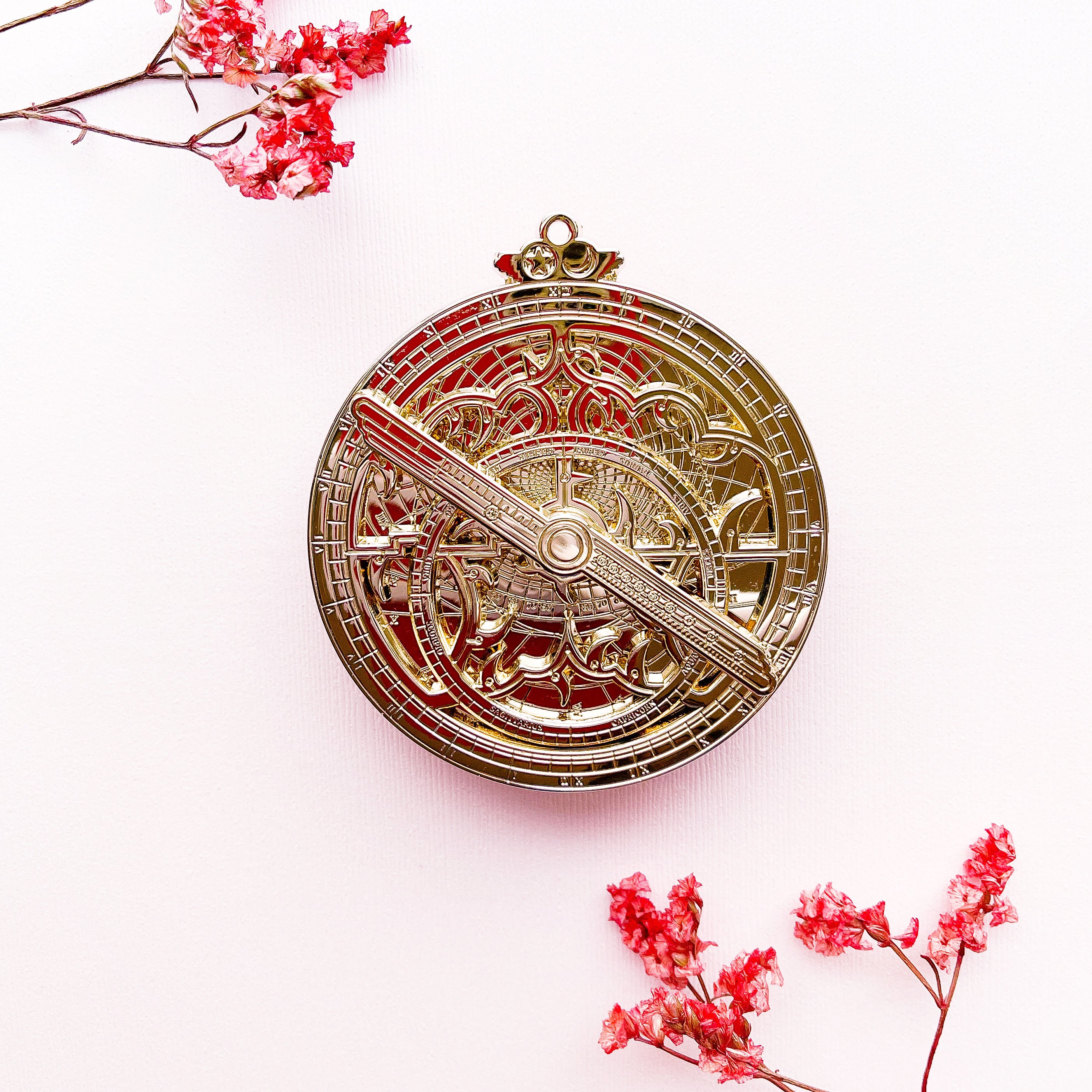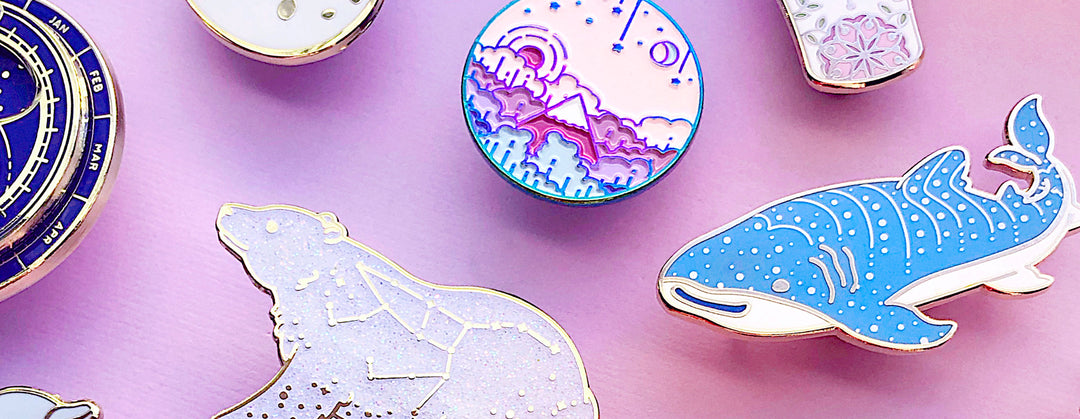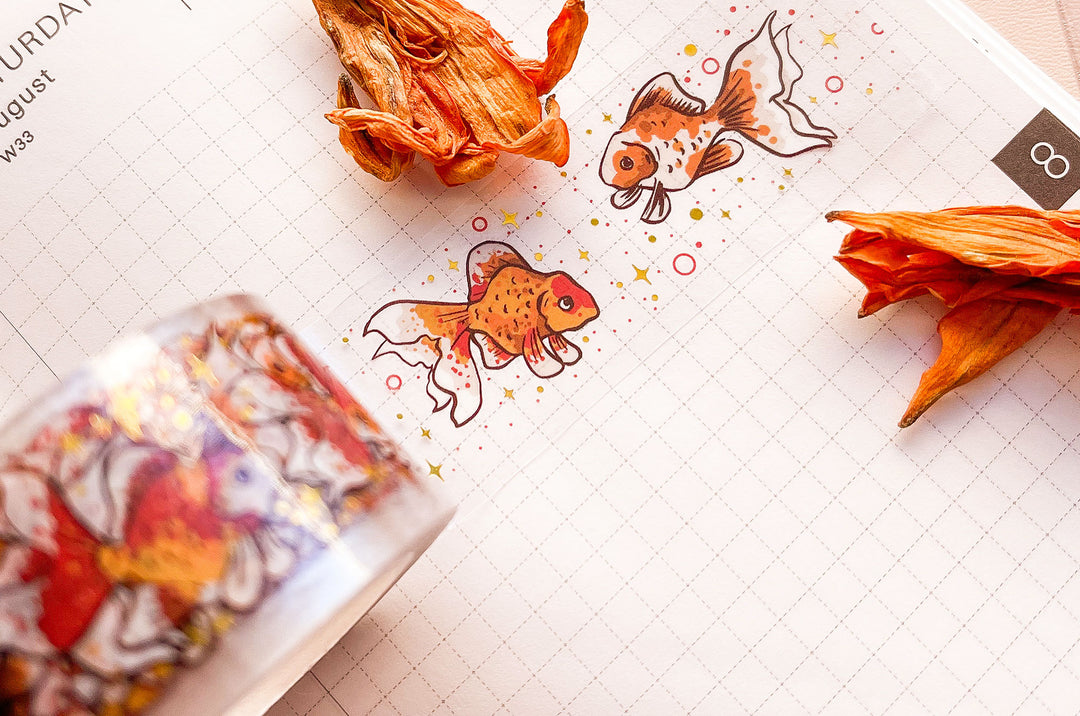Pin Grading Scale
Pin grading is not a universal practice among artists, some practice it and some do not. Every artist has a different scale with which they grade their pins, some are more lenient and others are more strict. It is important to remember that all pins are handmade items, no pin is ever perfect and small variations can occur from unit to unit. Below is how I grade my pins.
How I Inspect My Pins
I inspect my pins in either natural sunlight or under a 100w equivalent lamp. I hold the pin at a little closer than arm's length and look over the surface, checking for gouges, low fill, large scratches, large areas of scuffing and more. I then rotate the pin in my hand to check the sides to ensure there aren't large areas of missing plating. Finally, I turn the pin around and ensure the posts on the back are secure and my backstamp is present. Usually when inspecting pins, I place significantly less scrutiny on the sides of the pin, and place almost no scrutiny on the back of the pin.
Though I grade my pins my hand and try my best to sort A and B grades, some mistakes are bound to occur here and there. Pins are hand made items and no pin is ever perfect as a result. It is also important to remember that pin grading is a subjective matter and standards will vary from artist to artist. Pins with special features, are larger in size, are plated with black nickel or rose gold, or have large areas of polished metal may have some minor surface scratches and still qualify as standard grades.
Currently, only collectible items are graded (pins, charms, etc). Other products that I sell that are considered usable items or tools (drinking glasses, pouches, rulers, stickers, etc.) are inspected and tested to ensure they adequately perform their desired function and comply with my design specifications, but they are not graded.
A Grade/Standard Grade
A grades or standards are scrutinized primarily on their facing surface (the front or design side of the pin) and are graded on a curve. The sides of the pins are scrutinized to a much lower degree, and the back of the pins are not scrutinized except with regards to the posts and the back stamp. Generally, these are pins that have some minor blemishes or flaws that are only noticeable if inspected up close and under bright light. Some of these blemishes include...
- small, but not noticeable, air bubbles
- small, but not noticeable, enamel under fill
- some light imperfections in the metal plating
- surface scuffing or light scratches on the enamel or metal
- small, singular nicks on the enamel or metal
- some minor dust mixed into glitter
- some areas of overturned glitter
- minor paint pooling on screen printed pins
- some areas of missing plating on sides of pin*
- some areas of enamel spillover on sides of pin*
- small specks of dust on soft enamel pins
- encased posts with slight wiggle
- minor offset in screen printing
- not noticeable plating imperfections on the front of pin
I test and polish all A Grade pins to ensure that they conform to the artwork and specifications of my design. Most A Grades are eligible to be paired with a custom color rubber pin back or a metal locking pin back.
*Note that the sides of pins are held to a much lower level of scrutiny when considering an A grade from a B grade pin. A grade pins may exhibit scuffing in the metal surface, minor enamel spillover or small areas of missing plating on the sides and still be considered an A grade.
These pins are sold at full price and make nice gifts or additions to a collection. They are beautiful and are great for wear or display purposes. The vast majority of pins that I sell are A grade or Standard grade.
B Grade/Seconds Grade
These pins have noticeable flaws that become obvious if looked at in normal light and at arm's length. Some have more minor or major blemishes than others. Like A grade pins, B grade pins are primarily scrutinized based on their facing surface (the front of the pin) with some scrutiny for their sides and, with exception to the posts and back stamp, are not scrutinized on the back of the pin. B grade pins can still make good display pieces if a collector doesn't mind some blemishes, and they are perfect pins for wear. Some of the flaws that would qualify a pin as a B grade include...
- noticeable or multiple areas of under filled enamel
- moderately scuffed enamel or metal
- multiple points of imperfections on the metal plating
- multiple air bubbles in the enamel
- missing metal lines
- missing enamel on a small portion of the pin
- noticeable off-set screen printing
- some missing screen printing
- areas of low glitter
- one unfilled area of enamel
- enamel staining on sides or back of pin
- overfilled enamel that floods some metal lines
- some missing plating on duochrome pins
- large amounts of glitter in areas where there shouldn't be
- noticeable amounts of dust on soft enamel
- small gouges or marks on enamel
- encased posts that have significant sway
- large areas of imperfection of the metal on the sides of the pin
- large areas of plating missing on back of pin
A seconds grade pin might not be as nice as a Standard Grade, but it is still highly wearable and can make a good additional to a collection if the imperfections noted above are not bothersome to a collector.
On occasion, I may sell "B2 Grade" pins, which are pins that I consider to be slightly more defective than a Seconds (B Grade) pin, but are not considered junk, for a deep discount.
C Grade/Free Grade
Pins in this category have multiple and very obvious defects that are immediately noticeable at arm's length and under normal lighting conditions. These blemishes prevent them from being sold as standard or even seconds. Their defects are so severe that a collector may not wish to display them, but these are still highly wearable. Some of these defects include...
- large and very noticeable areas of scuffing
- large or deep gouges in enamel
- large or deep scratches in enamel
- large areas of under filled enamel
- multiple defects or imperfections in the metal plating
- large and multiple air bubbles in soft or hard enamel
- multiple areas where glitter has been misapplied
- large or multiple areas of missing metal lines
- multiple areas of enamel staining or discolored enamel
- low quality enamel or metal work
- missing or incorrect back stamp
- duochrome plating is missing on over 40% or more of metal
- significant areas of low-fill
- more than one unfilled enamel area
- broken or missing pin posts
- color changing enamel does not color shift
- areas where enamel is missing
These pins are not put up for sale and are sometimes included for free in some orders.
D Grade/Junk Grade
These pins are severely damaged, defective or have so many flaws that they are a poor representation of my artwork and quality. Pins that are missing my back stamp or have had their posts fall off qualify immediately as junk grade pins. These pins are not given away or sold and are collected then sent to be recycled at a metals recycling facility.
S Grade/Collector Grade
These pins are usually A grades that I keep as a model for photography, for my portfolio of work, or for display purposes. They most closely comply with my design specifications. I do not sell S Grade or Collector Grade pins and do not make any exceptions. Due to a variety of factors, mostly the varying nature of pin grading practices and the handmade nature of pins in general, I will not take requests to scrutinize pins to find the best quality unit in a batch, for any particular customer, no matter the circumstances.
Oopsies Pins
Oopsies pins are not a grade, I typically use this category to denote pins sold at a slight discount because the artwork may be incorrect among an entire batch. Incorrect artwork that qualifies pins as an Oopsies can include incorrect color fill, incorrect pin size, missing metal lines, or wrong plating. Oopsies aren't necessarily flawed and are sold like regular pins, except with a small discount.






